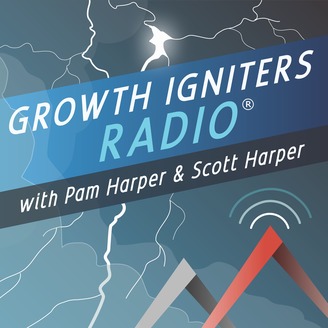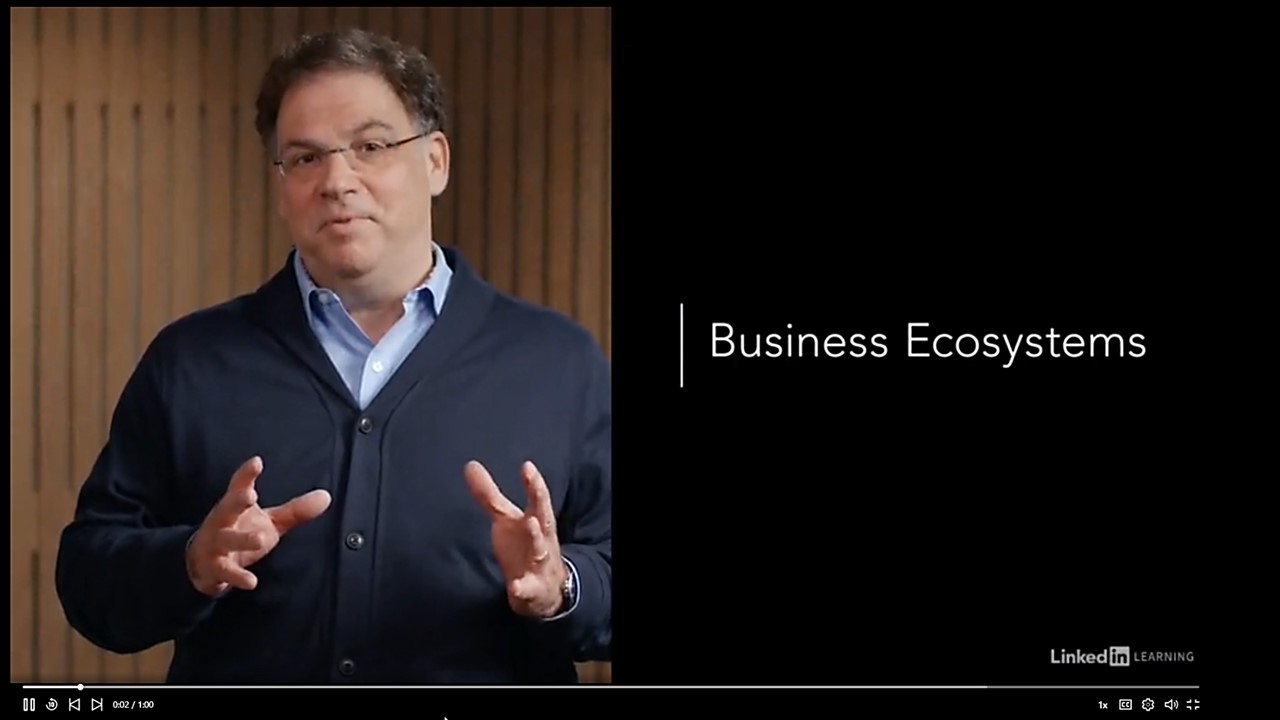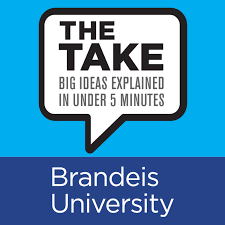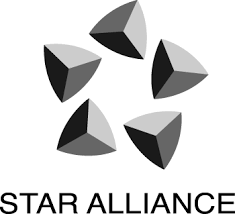Hosted by Pam Harper and Scott Harper | Originally published on Growth Igniters Radio with Pam Harper and Scott Harper®

— How Can You Change Your Competitive Game? Create Alliance Constellations —
Click Play below to listen to this podcast
Transcript of Podcast:
Chris Curran: Growth Igniters Radio With Pam Harper and Scott Harper, Episode 114: How Can You Change Your Competitive Game? Create Alliance Constellations.
This episode is brought to you by Business Advancement Incorporated − enabling successful leaders and companies to accelerate to their next level of success. On the web at businessadvance.com. Now, here’s Pam and Scott.
Pam Harper: Thanks, Chris. I’m Pam Harper, Founding Partner and CEO of Business Advancement Incorporated, and right across from me as always is my business partner and husband, Scott Harper. Hi, Scott.
Scott Harper: Hi Pam. It’s always, it’s a pleasure to join you for another episode of Growth Igniters Radio With Pam Harper and Scott Harper. If you’re listening for the first time, our purpose is to spark new insights, inspiration and immediately useful ideas for visionary leaders to accelerate themselves − and their companies − to their next level of growth and success. So Pam, what are we focusing on today?
Pam Harper: How we can all change our competitive game − in this case, not by having just one strategic alliance, but by intentionally joining multiple strategic alliances together. This can vastly expand our ability to redefine what’s possible for staying first, fast and foremost in the marketplace. The fact is, we’re seeing an increasing number of companies that are heavily relying upon the success of alliance relationships for substantial aspects of their strategy.
That’s why even though CEOs, C-suites, and boards are not often hands-on in these relationships, the principles behind designing, leading and sharing alliance value is something that everyone needs to be familiar with. This allows us to better evaluate the real opportunity, the risks and the rewards − the ROI.
Scott Harper: And of course alliances are not at all new, and lots of companies have multiple alliances. But what’s different now is that there are lots of advances in technology and communications that have made it possible to create a much wider range of alliance combinations. These relationships can change fluidly to meet your needs and your customer’s needs as the business environment changes. This allows you to adapt and increase capability and capacity and reach as never before.
Pam Harper: The trick, of course, is to do this so that the interest of all stakeholders are served to the greatest extent possible − and that’s no easy feat. That’s why were so happy to be speaking again with Ben Gomes-Casseres. He is an expert in the strategy of business combinations who’s been studying, teaching and consulting on this topic for 30 years.
Ben first joined us in episode 91 where we discussed his newest book, Remix Strategy: The Three Laws of Business Combinations. Ben has published four other books as well as many academic and managerial articles. He’s a professor at the International Business School, Brandeis University.
Previously, he was a professor at Harvard Business School and before that, an economist at the World Bank. Ben holds degrees from Harvard, Princeton, and Brandeis, a native of Curaçao, he speaks four languages and you can see more about Ben by going to growthignitersradio.com selecting episode 114 and scrolling down to resources.
Ben, welcome back to Growth Igniters Radio.
Ben Gomes-Casseres: Well, thank you very much, Pam and Scott. It’s a great pleasure to be back with you, and I look forward to engaging with you and your audience on this topic.
Pam Harper: It’s such an important topic; let’s just jump right into this. Ben, how would you describe an alliance constellation?
Ben Gomes-Casseres: It’s really a technical word for something very commonplace that we all know about − and that is that it often takes a team to get the job done. Very often, we need partners in business as businesses become more complex. And we find that today with the rise of technology and many other pieces of industries that we need to stitch together in order to create our business, we often need more than one partner. The question then is, how do you organize this − I call it an alliance constellation, which means that it’s a number of firms, maybe two, maybe three, maybe five, maybe sometimes more − that together create value and need to be managed as a team.
Pam Harper: Can you give a quick example? I mean, one that comes to my mind is Airbus, for instance.
Ben Gomes-Casseres: That’s a good example because Airbus obviously has multiple partners that contribute different parts of the technology in the manufacturing and the marketing of their product, but even so closer to airlines, the airline services, the airline that fly − United and American and Delta − they all have large constellations, large groupings of teams of players with which they span the globe. So we experience this, for example, when we fly Star Alliance partners or One World Alliance partners or Sky Team Alliance partners. Those are constellations of multiple players, each in a different country, and together they add more value than if they each tried to do all of that global flying on their own.
Scott Harper: Okay, so the difference then between an alliance constellation and just a group of multiple alliances that are not a constellation, is that with the constellation, the different partners are connected and there’s really some kind of common governance so that they’re an entity in themselves. Yes?
Ben Gomes-Casseres: Yes, I think that’s right. They’re consciously managed as a team. If you throw people together, maybe they can get more done than one person, but if you throw them together and they actually organize themselves as a team with a leader and some rules of engagement, with some division of labor, then that team would get a lot more done. In other words, they would compete better than if you just have a random collection of people.
One of the things to realize is that sometimes these constellations do grow in an ad hoc fashion. They just kind of begin − we have one partner, then another, then another. Before we know, we turn around and there are five or six or 10 that we have. Then at that point, companies often say, “Well, it looks like we need to organize this portfolio, this network of partners a little bit better. Let’s then apply some conscious thinking to that strategy.”
Scott Harper: Okay, so you mentioned that they can compete better. Why is that?
Ben Gomes-Casseres: Well because by putting the competitive advantages of different firms together, you get this “one plus one is three” effect. If you recall from our discussion earlier, that is one of the laws of success for any business combination. You have to be able to create more value or better products or cheaper products when you act together with a partner than alone. When you do that with multiple players, that effect can get even exponentially greater.
Pam Harper: When would you say is a constellation approach most appropriate for achieving strategic objectives?
Ben Gomes-Casseres: Right; it depends on your industry, and it also depends on your competitors. Some industries are very simple; you don’t need a lot of different components in order to achieve a good market value. Other industries require a whole ecosystem, as we also use the term sometimes. Today, there are platforms that engage users and buyers and sellers, and therefore multiple sides of the business have to be engaged with each other. If you are in one of those kinds of industries where multiple parts are needed for success, then it’s hard to get away from the idea that it’s better to coordinate those parts than to just let them fall together randomly. It also depends on your competitors, or who your main challenges are in the market, because sometimes they start using multiple partners, and that may be a reason why one would have to follow that strategy as a competitive reaction.
Pam Harper: I’m thinking that there are so many companies out there that have these kinds of relationships, it’s almost hard to find one that isn’t set up in these multiple relationships.
We’re going to take a quick break, and when we come back, we’ll talk more with Ben Gomes-Casseres, author of Remix Strategy, about applying the three laws of business combinations to alliance constellations. Stay with us.
Scott Harper: We’re so glad you’re joining us on Growth Igniters Radio with Pam Harper and Scott Harper. We’re brought to you by Business Advancement Incorporated − on the web at buisinessadvance.com. We focus on enabling visionary leaders to dramatically increase momentum in their companies for game-changing results.
Pam Harper: Does this topic resonate with you? Check out related episodes to expand your perspectives and take away even more immediately actionable ideas. Just go to GrowthIgnitersRadio.com, Episode 114 and scroll down to resources.
Scott Harper: And while you’re there, sign up for our weekly alert of upcoming episodes so you’ll always be up-to-date.
Pam Harper: Welcome back to Growth Igniters Radio with Pam Harper − that’s me − and Scott Harper. Today, Scott and I are speaking with Ben Gomes-Casseres, author of Remix Strategy, about how creating alliance constellations can help us build a stronger competitive advantage. Ben, how can people find out more about you and your books?
Ben Gomes-Casseres: Thank you, Pam. My book is called Remix Strategy: The Three Laws of Business Combinations. It’s published by Harvard Business School Press. It’s available on Amazon of course. I have my own website that talks more about that topic as well. It’s remixstrategy.com.
Pam Harper: Okay. In the first segment, we discussed the concept of alliance constellations and why it makes sense to do it and a little bit about when to use then. But of course, there are principles that you talk about that underlie the success of any alliance relationship. This is especially so with these alliance constellations. Now let’s dig deeper and apply the three laws of business combinations to alliance constellations. I guess first up would be, how do you address issues of joint value creation in constellations that’s different from a 1:1 alliance relationship?
Ben Gomes-Casseres: Well thank you for framing it in that way, because I do think that these three laws apply very broadly to bilateral one-to-one as well as to multilateral, multiparty constellations. What we’re looking for here is this idea that “one plus one is three,” right? If you think of playing poker or any card game, any one of those cards − the Queen of hearts, for instance, it doesn’t have its own value. The only value it has is because it’s part of a hand; it’s part of a royal flush. That makes it valuable.
What you’re looking for in your own business is to understand what other businesses near you or adjacent to you are complementary to yours, and how they are needed by consumers or users in order to actually complete the service or the product that they want to have. A classic obvious complementarity idea is gasoline and cars. We look around and there are many other places where bread-and-butter go better together than by themselves.
When you find that in a business, for example a complex hardware or software or even a service − when you find that there are other businesses or services or components that if you were to work with them more closely and get a better fit that you can then create a better service or a better product, that is an opportunity for that kind of alliance. And obviously, when you do it with more than one partner you are creating as I called it an alliance constellation. One has to be careful about that strategy then.
Pam Harper: Absolutely. When you’re thinking about literally changing the game like that, this is when I think that the C-Suite and boards really have to get involved, right?
Ben Gomes-Casseres: Yes.
Pam Harper: I mean, you’re talking about going into whole adjacent ecosystems. You’re talking about creating something that wasn’t before possible. That’s a lot of what our listeners are looking at now. It seems to me that this is an area where too often, it’s delegated. I see this is as something that everybody who’s involved needs to know about on some level, even if you’re not the one who’s hands-on creating it.
Ben Gomes-Casseres: I think that’s right. Obviously, the complex organizations do value a certain amount of delegation. At the same time, having the vision, having that leadership for driving a larger set of partners really needs to lie at the top. I don’t think it gets done at the alliance deal-making level; it gets done at the strategic level higher up in the company.
When we look at companies that have disrupted or somehow changed their industry − take Apple or Google as well-known examples − each one of them uses something like this to overturn the existing products that may have existed before but that didn’t stitch together as many pieces. Google is a collection of businesses as we know. Those businesses interact with each other, reinforce each other so that the totality of Google’s value is greater than any one of those businesses on its own.
Scott Harper: Right. On the flip side of the coin, just as the top of the organization has to be involved strategically, the people who are managing and creating the organizations and the alliances need to be keyed into the strategy as well. They have to have a strategic, and not just an executional mindset so that all the pieces work together in the right way to get the outcome you really want.
Ben Gomes-Casseres: Yes, it’s very important that people actually implementing an alliance are not only conscious but active in the strategy formation for the whole constellation. What I like to say is you have to have a global vision but also local gains. We need to know at the local level what makes the various partners successful and how we can nurture that so it’s successful.
At the same time, when we make those decisions with individual partners, or if we were perhaps to solve particular problems or decisions with them, we can’t do it without thinking about the impact that might have on other partners. So these complex large alliances like the airlines, for example, like I mentioned to you − when they’re working with one partner in Asia, the decisions they make are going to affect other partners that fly in a similar route. Not only do we need that mindset, but also individual rules of engagement, and maybe some scope of action needs to be defined clearly for each of the alliances so they don’t interfere, but rather build upon the value that’s created with other partners too.
Pam Harper: So Ben, one of the things that strikes me is in a constellation, how fluid it actually can be. You can have a very loose constellation where the relationships are structured in “stars” and other formations that you can elaborate on, but at the same time, a constellation can be as tight as say, a joint venture or a merger. Can you tell us a little more about that?
Ben Gomes-Casseres: Yes, absolutely. Just like is the case for a partnership with a single partner, we can have very loose or very tight formal kind of arrangements. What often happens with constellations is that we begin to build them with deals that are maybe on the looser side, and they’re starting to learn to work together and evolve to a larger group of players.
We actually don’t always know who the best players are on our team, and so it’s important to be flexible and agile. In that sense of using a team, we’re in the beginning of baseball season right now. It’s very much what they’re doing in spring training. They’re taking on some players and then they’re deciding to make them part of the formal roster or not. I think constellations often grow that way. They start by aggregating lots of different players and then they prune the constellation and they make them more formal and bring in the ones that provide greater value closer to the core. It is important to have a core. It’s important to have a leadership.
Sometimes it’s one firm, but many times it’s a couple of firms that could be at the center of the ecosystem or the constellation. As you get more firm about exactly the shape of this business and how the constellation will compete, some of the players become closer in and others may fall off. That’s one of the ways in which constellations evolve and change over time.
Pam Harper: That makes a lot of sense, especially when you’re creating new value. In other words, if it’s never been done before, you’re redefining what’s possible. You don’t know what you don’t know, so it has to be like that. So then, how does that kind of thing impact on sharing value in these alliance constellations?
Scott Harper: Because it can be pretty complex…
Ben Gomes-Casseres: Yeah, it’s complex and it’s tricky because the sharing of value − which again is something that happens for any alliance whether it’s a multiple or single player − the sharing of value is also very dynamic. Over time, as the business develops, it turns out that we get to see which part of the business in a way is most valuable.
Take the example from computers where IBM and Intel and Microsoft way back when started the microcomputer revolution. Everyone thought that IBM was the chief player there and at the lead of that constellation of three. It turned out that Intel and Microsoft, in fact, were the ones that captured most of the value that was created by that particular grouping. We see that in groupings, and constellations of every sort that what they try to do is something new, and because it’s something new, we don’t really know exactly where in this value chain value will settle. Over time, some partners may get stronger. Others get weaker, and that of course, leads also to change in the structure of those constellations also.
Scott Harper: So it has to be fluid and in the end, it has to be what’s perceived as fair by all of the partners in that constellation.
Ben Gomes-Casseres: I think so. Again if we share a value in a way that leads one of the players to feel that they got the short end of the stick, then it’s quite common and obviously understandable that they will not want to invest any more in that kind of relationship. That’s one of the ways in which constellations, as well as alliances of simpler sorts, break up — when value is not distributed in a way that reinforces the value for each of the players involved.
Pam Harper: So Ben, having that awareness of the value creation and combinations keeping in mind the special governance considerations in constellations, and also how you’re going to share value so that it is fair to all and there’s a good ROI are going to be these three rules of business combinations we can’t overlook.
Ben Gomes-Casseres: I think that’s right.
Pam Harper: Okay. We’re going to take another quick break. When we come back, Scott and I will talk more with Ben Gomes-Casseres, author of Remix Strategy, about immediately actionable things you can do to create alliance constellations that can give you company a true competitive advantage. Stay with us…
Scott Harper: You’re listening to Growth Igniters Radio with Palm Harper and Scott Harper, brought to you by Business Advancement Incorporated. We focus on enabling visionary leaders to dramatically increase momentum for game-changing results. We’re on the web at businessadvance.com.
Pam Harper: If you’re finding this discussion of getting the most from your business combinations useful, we invite you to download our free special report, “Building Powerful Strategic Alliances.” We developed our findings and conclusions based on responses from senior executives in over 15 industry sectors. While strategic partnering is becoming more important than ever before, over half of the executives we surveyed were dissatisfied with the outcomes. Find out why and what you can do to increase your return on your partnering investment.
Scott Harper: Learn more by going to growthignitersradio.com, episode 114. Scroll down to the resources section and click on the link “download strategic alliances report.” And feel free to contact us if you have any questions.
Pam Harper: Welcome back to Growth Igniters Radio with Pam Harper and Scott Harper. Over the last two segments, Scott and I have been talking with Ben Gomes-Casseres, author of Remix Strategy, about how creating alliance constellations can create a competitive advantage. We also discussed the aspects of the three rules of business combinations that Ben describes in his book Remix Strategy. Ben, how can people find more about you and your books?
Ben Gomes-Casseres: Well, thank you, Pam. The book is available on Amazon.com. It is published by Harvard Business School Press. It’s called Remix Strategy, as you said. There are additional views, blogs, and perspectives on my website, called remixstrategy.com.
Pam Harper: One of the things I especially like about this book is that you have so many helpful diagrams so that it’s easy to digest the concepts.
Ben Gomes-Casseres: Right, thank you, Pam. I do have about 20 frameworks, tools that you can apply, and some of them apply directly I think to this question of constellations that we’re discussing today.
Pam Harper: Great. This segment of Growth Igniters Radio is where we like to talk about immediately useful ideas. Let’s talk first about an immediately useful idea for creating the right constellation structure for your strategic objective.
Ben Gomes-Casseres: Right. So I think the thing you need to do there is to understand what capabilities or assets are needed to succeed in business. This doesn’t just mean what do we have in-house, it actually means what is outside of our company that may be useful to us. What I do for this is ask people to list or chart out all of the various pieces of the puzzle for their business, whether it’s production, or channels, or software and hardware, or services. All these pieces, if they need to work together well for our business to succeed, then they are pieces that are complementary. Then we need to find a way to create some sort of link, some sort of loose partner or tight partnership grouping.
Pam Harper: Okay Ben − what if we don’t know what we don’t know? Say we’re creating something that we’ve never done before. We have a great idea. It’s a wish that’s being taken seriously, and now we’re turning it into a reality. How do we chart that out if we don’t know all the pieces?
Scott Harper: We don’t necessarily have everything in our company; that’s why we need to look outside. How do we figure it out?
Ben Gomes-Casseres: When we’re doing something entrepreneurial and innovative in that sense, then clearly it’s much more dicey, I suppose, to think about exactly what it is we might need. Under those circumstances with that uncertainty about exactly who we might need to ally with, we form alliances and partnerships that allow for flexibility. These are in a way are bets; they’re ways to create an option in the future where we can later maybe get deeper with them. Or if it turns out that the world moves in a different direction because as you said, we don’t know the answer of that, then we might close down that alliance. It’s important to keep that flexibility in mind when you set up the alliance because you’re going to need flexibility later on as the world unfolds.
Scott Harper: Okay. One of the things that I infer from what you just said is that discovering the partners in your ecosystem can be enabled by first identifying someone closer in that you think is valuable, and they may know other organizations that are valuable as well, and one builds on the other.
Ben Gomes-Casseres: It’s the sort of “the friend of my friend is my friend.” We want to understand what they think is valuable and have a larger conversation in the team, if you will. The other strategy is “the enemy of my enemy is my friend.” One also has to understand who else is competing or is trying to start a business like we are and what are they using as a partner. If you look today at the ride-sharing services, Uber and Lyft and all those, each one of them has a different carmaker for example. It becomes their main partner or mapmaker that becomes their main partner. It’s important to know the landscape even beyond your own constellation to understand the footprint, if you will, of your rivals in the same game.
Scott Harper: That’s how you can discover new partners in the ecosystem.
Ben Gomes-Casseres: Yeah.
Pam Harper: I would guess also that to a certain extent, it’s important to have some checkpoints or milestones where you can say things should certainly be happening in a certain direction. We need to evaluate at these points before too much risk happens.
Ben Gomes-Casseres: Yes; I think the lean startup methods are very applicable here, where you do something in a small way to see how it works and then you pivot and you change the direction of your strategy. That applies to product development in the lean start-up kind of model, but it also applies to creating your constellation or your set of partnerships, because each of those will prove its value over time − usually in a short time or it turns out that maybe it’s not the right partnership.
Scott Harper: And just as with other models as you said, you develop a better sense as you go along of the critical success factors, the things that need to really happen to give you the full value.
Ben Gomes-Casseres: Yeah, absolutely. I think it’s very important not just to think up front when you set up on alliance or a constellation, but to monitor them and to be conscious of the returns that are being produced by the strategy, both to you as well as to your partners. Because again, if they don’t get the returns that they seek, they will lose interest.
Pam Harper: Okay. What could you suggest in terms of ensuring that you and your management team are able to effectively lead the constellation?
Ben Gomes-Casseres: Well, what matters there is that we think broadly, that we have a mindset that’s beyond our firm. Copernicus and Galileo showed us that the earth is not in the center of the universe or the solar system, but that we are all part of a larger system. I think many companies maybe think of themselves as the center of the universe. That sometimes does not allow them to see the value that’s sometimes just around the corner outside of their borders. It’s important to step back and to ask the critical question, “what role do we play in this larger system of players and therefore how can we lead this larger group in a way that creates more value for all.”
Pam Harper: I would agree with you. I also think from things that I’ve seen, having an understanding of what’s really going on with your partners and what they’re facing in their own companies is very valuable. I can remember one situation where a CEO was talking to me about the fact that three of his alliance partners were not able to come through; something that happened in each case all at once, which was very unfortunate. He had to be able to figure out how he was going to lead this group that was facing their own crisis simultaneously. I mean it doesn’t happen often, but it does happen.
Ben Gomes-Casseres: Yes, yes. When it happen simultaneously, that is a particular problem I suppose. But yes, stepping in the shoes of your partner and knowing what they live and why they are allied to you is the first rule of being able to manage that relationship. When we do that for single alliance, we might call it a health check. When we take a good look at how our relationship is going, what each one is getting out of it, are we communicating properly, are we thinking strategically and in a way you can get people in the room to do that on a one and one kind of alliance.
It’s harder when you have a multiple party situation like a constellation. But again, those companies and those groupings that do that well do bring people together in the room from different players and find ways to establish not just contracts between them but social relationships between the players from different partners so that they act as a team rather than just sort of one-on-one alliance.
Scott Harper: And it is so important to really bear trust building in mind, because if you don’t have trust, no one is going to talk to anybody. People will withhold and you’ll get surprised. The more complex the relationship is, the more you really have to focus on building that sense of community in that relationship.
Ben Gomes-Casseres: Absolutely. When you build that larger community, it’s also important to have some rules of engagement, some membership norms so that in fact we know what’s expected of different players in the group and therefore trust doesn’t get broken because we just sort of stepped in the wrong toe here. We want to know exactly what each one of these players inside a larger grouping, what the scope of their responsibilities and their role is. That makes it easier I think to establish the trust that you’re describing.
Pam Harper: This is a lot to bear in mind, but the outcomes and the payoffs can be so tremendous. Thank you so much for talking with us today and sharing more of the three rules of business combinations, and how we can use allinace constellations to change our game.
Ben Gomes-Casseres: Thank you Pam and Scott. It’s my pleasure. I welcome your readers to engage with me on my website.
Scott Harper: Very good; thanks Ben. And thanks to you out there for listening. To get show notes and resource links for this week’s episode, go to growthignitersradio.com, episode 114.
Pam Harper: Until next time, this is Pam Harper…
Scott Harper: And Scott Harper…
Pam Harper: Wishing you continued success, and leaving you with these questions to discuss with your team:
Scott Harper: How can we change our own competitive game through alliance constellations, and how can we apply the three rules of business combinations most effectively to create more successful outcomes for any of these relationships?
Podcast and transcript © 2017, Business Advancement Inc. All rights reserved.







